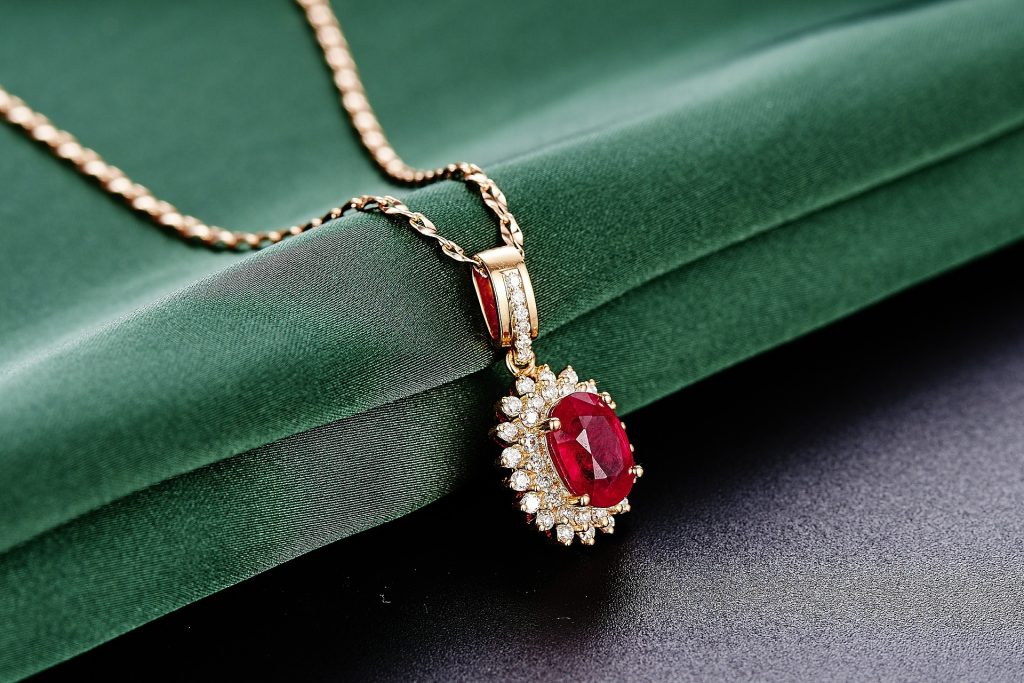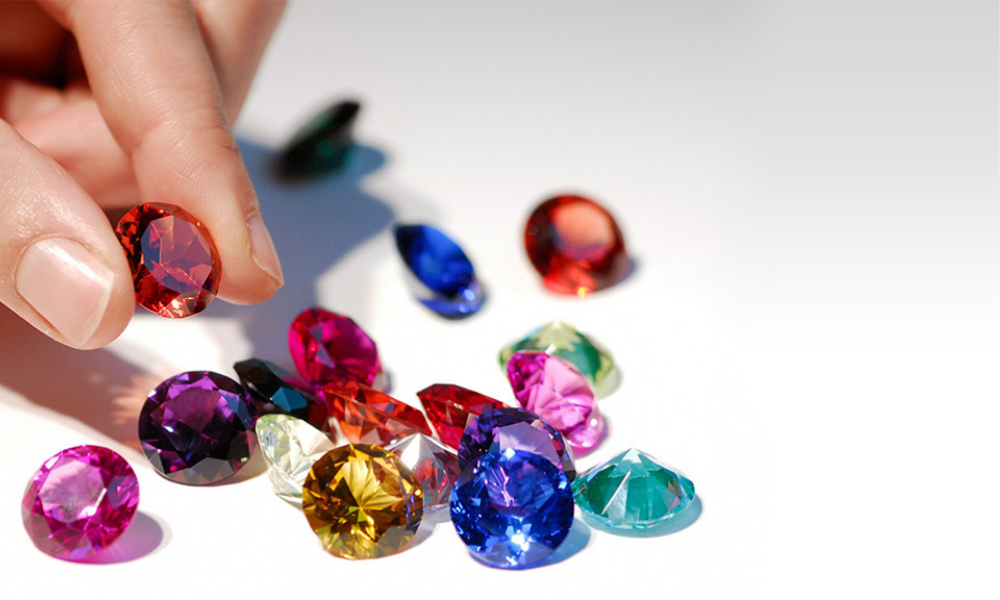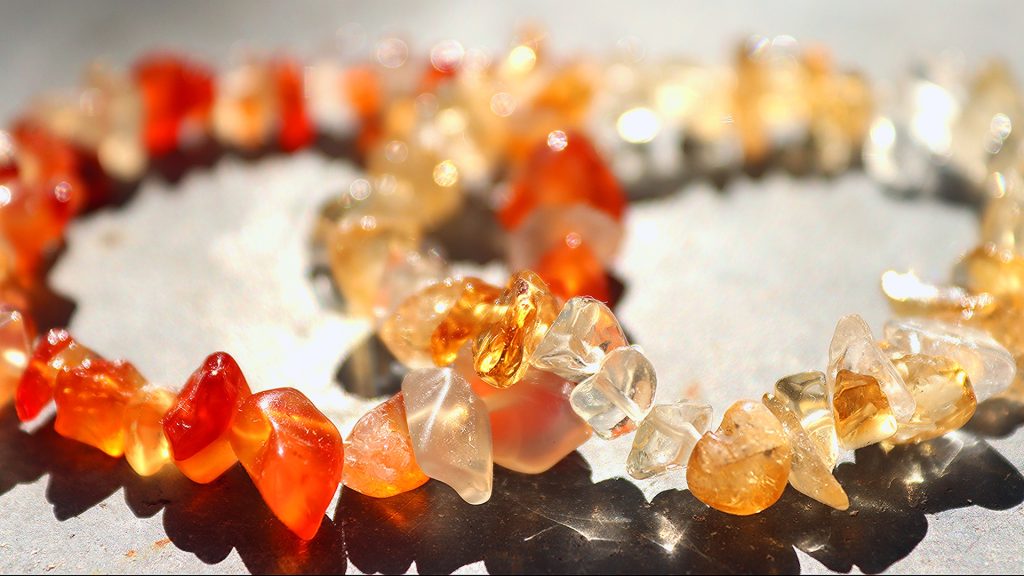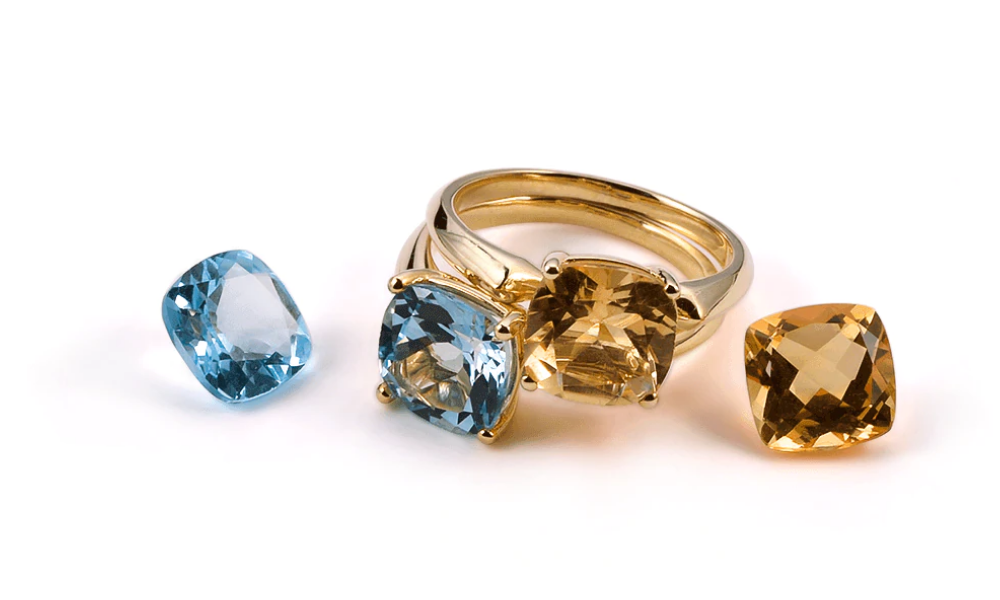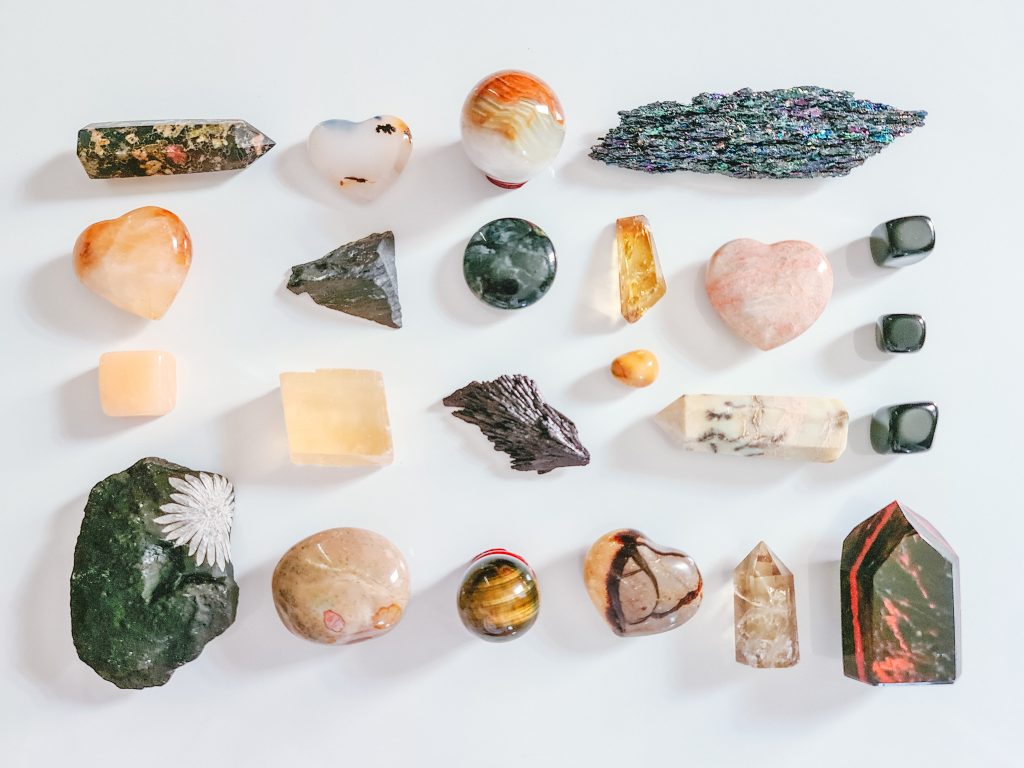A stone’s cut face is the part that’s visible when it’s on display. The other side is the crown. It’s the most common shape, and it features facets of varying sizes. It can be round or square. Depending on the shape, it can be faceted or cabochon. The faceted face is the most common type of cut. The crown is a stepped rectangle with its corners removed, and the table is the biggest, flat facet.
The cut face of a gemstone refers to the outline of a gemstone that is visible when viewed face-up. There are several different shapes and styles of cutting, including the step cut, the brilliant-cut, and the emerald cut. Usually, these cuts do not meet closely, but they can be improved with higher precision. A keel line is a thin line on the bottom of the facet arrangement.
While some cut names allude to the finished gem’s face-up shape, others refer to the shape and arrangement of the facets. Gem cutting styles are another name for these cuts. Brilliant, step, and mixed are the three most basic cutting styles. A “round brilliant diamond,” for example, has a round form yet is cut brilliantly. Faceters can mix and match these styles to create a wide range of gem designs.
The Three Basic Gem Cutting Styles
Brilliant Cut
Facets in brilliant cuts are triangular and kite-shaped and radiate outward from the gem’s center. As its name suggests, the dazzling cut produces the highest scintillation of any cut.
Step Cut
Rectangular facets that ascend the crown and descend the pavilion in steps make up step cuts. Emerald and baguette cuts are examples of step cuts. These are popular because they highlight the color and clarity of the stone while also producing a slight sparkle.
Mixed Cuts
The step cut and dazzling cut styles are combined in mixed cuts. The crown has dazzling facets, while the pavilion has step facets or vice versa. Cabbing and faceting techniques may be used in mixed cuts.
What Are Other Combinations Of Shape And Style?
Faceters can use practically any form to combine the above cutting styles. A princess-cut, for example, is a square modified brilliant. An Asscher cut is a square step with beveled corners. A Barion cut is a mixed square cut.
Of course, there are variances within each shape. There might be many or few facets on a triangle gem and slight brilliance and scintillation.
Rose Cut
The rose cut is a unique style significant to gem-cutting history. While brilliant and step cuts are currently the most common, the rose cut is a unique style vital to gem-cutting history. The rose cut, which dates back to the 16th century, features a circular, cabbed flat base and a faceted top. (Now and again, you’ll come across a gem with a faceted pavilion and a dome crown.) This isn’t, however, a standard cutting technique).
Triangular facets rise to produce a faceted mound shape. While each rose cut has many facets, the face-up shape is virtually always round. Roses allowed 16th-century cutters to make the most of flat rough, resulting in diamonds with more excellent brilliance than ever seen.
This cut, on the other hand, isn’t enticing. It lacks the radiance of a modern brilliant. Many jewelry owners had their rose-cut diamonds recut into more fashionable forms over the ages. Fashions do, after all, change. Due to their vintage look, rose cuts are making a comeback.
Briolette Cut
The briolette is a faceted teardrop cut that is another popular vintage style. It also looks like a pear with a rounded shape or a double-rose cut. During Victorian times, jewelers drilled these then-popular stones as beads for necklaces and earrings.
Ceylon Cut
A step-cut pavilion and a brilliant-cut crown characterize the Ceylon cut. In Sri Lanka, this ancient practice is still employed. The reverse, a step-cut crown over a brilliant-cut pavilion, has been demonstrated to provide the most brilliance in studies.
Barion Cut
The Barion cut, while a mixed cut, warrants its category. It works by inserting a brilliant round pavilion into a fancy-shaped diamond. It usually also features a step-cut crown. When compared to other processes, this usually produces significantly more brilliance. Barion cuts, on the other hand, can be practically any form and have a wide range of facet combinations.
Others have step cuts on the crown and brilliant cuts on the pavilion, while others have brilliant cuts on the crown and step cuts on the pavilion. The quarter moon facets positioned just beneath its girdle serve as a unifying characteristic that distinguishes the Barion from mixed cuts.
In the middle of the stone, the arrangement of Barion-cut facets provides a distinctive cross-shaped pattern. Barions eliminate the bowtie extinction effect. They also allow cutters to maximize roughness while concentrating on color because they are typically more profound than other cuts.
Compared to alternative pavilion shapes, barions with brilliant circular pavilions provide more light discipline inside the gem. A stone like this can have a stunning “fountain of light” impression.
Cuts That Have Been Altered
Gem cutters can adjust brilliant, step, and rose cuts to maximize rough usage or create unique effects. The shape and types of facets are consistent, but the quantity and arrangement of facets may vary.
Gems are labeled as “modified” if cut differently than the standard. “Modified round brilliant” or “modified emerald cut,” for example. Because its name already encompasses a variety of facet placement techniques, the Barion is an exemption to the “modified” rule.
Cabochons Cuts
Cabochons or cabs are gems polished into domes. These gems date back to antiquity and have remained popular throughout the centuries.
Some gem species, such as opal and moonstone, are cabbed to enhance aesthetic features like play of color, cat’s eye, and asterism. These impacts would be less noticeable in faceted stones. Some stones are cut into cabochons because they are too opaque for faceting or are of poor quality. The color and luster of these stones would be highlighted rather than their brilliance if they were cabbed. Cabochon cuts are sometimes used on softer gem materials since cabs don’t show scratches as quickly as faceted jewels do.
Cabochons are often circular or oval. Gem cutters may give them square or rectangular shapes on occasion. They will reveal creases in certain circumstances. Cabochons come in single or double cabochons. To increase weight, natural stones are usually polished into double cabochons.
Name Cut
Every day, new gem cuts are generated.
A faceted cut is a checkerboard cut gem with square facets, giving it a checkerboard crown and table. This is a popular cut for translucent stones.
The heavenly cut, a round cutting style, purportedly offers a gem with more excellent sparkle, a higher perceived color grade, and a more prominent face-up appearance than round brilliants.
Another new style that is both refreshing and lovely is the snowflake cut.
They named cuts to refer to a collection of inventive but less usually encountered cuts. The number of specified cuts grows as technology progresses. Gem collectors will always be the driving force behind new developments. Not all of the specified cuts, however, are brand new.
Portuguese Cut
The Portuguese cut is a typically named cut with numerous tiers of facets that provide a beautiful display of light. Almost no other cut has as much scintillation as this one. As you can see in the photo below, the Portuguese culture has numerous facets and necessitates effort. Combined with the fact that the rough must have a deeper depth than usual, these criteria mean you’ll only encounter this cut on rare occasions.
Name Some Valuable Gemstones In The World?
Padparadscha Sapphire
Padparadscha sapphires (pronounced pad-pah-raj-ah) are extremely uncommon and can only be found in Sri Lanka, Madagascar, and Tanzania. This stone is highly sought after by collectors due to its unique pink and orange tones blend. The gemstone is available in various colors, although medium tones appear the most appealing.
Because Padparadscha sapphires are so scarce, purchasers may have to make concessions while completing a purchase. This could entail selecting a stone with less clarity and a duller color or selecting a smaller stone. Because gem cutters strive to increase carat weight, shapes can be odd and varied. This is due to the stone’s scarcity and high demand. Expect to pay a premium for sapphires that are larger than 2 carats. For high-quality diamonds, the average price per carat is $8,000.
Alexandrite
The color-changing ability of June’s official birthstone is intriguing. Alexandrite is a color-changing gemstone that is green in daylight and red in incandescent light. It is one of the few color-changing gemstones available. The stone was discovered in Russia’s Ural Mountains in 1830 and other strange minerals. Czar Alexander II was afterward given the stone’s name.
Smaller forms of alexandrite have been discovered in Sri Lanka, Brazil, and Asia, but fine alexandrite specimens remain extremely rare and expensive. If it’s enormous in scale and has superb clarity, you’re most likely dealing with a synthetic heirloom alexandrite gem. These stones, usually blue and purple rather than green and red, are synthetic corundum. The average carat price might be as high as $12,000 per carat.
Musgravite
Musgravite was discovered in 1967 and is considered the world’s rarest gemstone. It was discovered for the first time in Australia’s Musgrave Ranges and then in Madagascar and Greenland. In 1993, the first large gem-quality specimen was discovered. There are perhaps ten specimens of gem-quality stones known and documented.
Unfortunately, because of the stone’s rarity, it’s unlikely that a consumer would find it on the open market. Due to the crossover between this gemstone and the less rare taaffeite gemstone, send it to a gemology lab for examination if you come across probable musgravite. Based on previously sold examples, the average price per carat is $35,000.
What Is Octagon Cut?
It can be challenging to determine between an octagon and an emerald cut. If the octagon cut has slightly truncated corners, it is virtually indistinguishable from an emerald cut when viewed from the top. When you glance at the side profile and see that the parallel facets are not at the same distance, you’ll notice the difference. Like the emerald cut, the octagon cut has facets running parallel to the girdle above and below.
The pavilion’s facets join along a ridge, comparable to the top of a house’s roof, rather than meeting in a single place like a brilliant round cut.
Modern-looking octagon cuts with equal-length sides (when viewed from the top) have recently become more popular. Despite their rarity for Diamonds, they are becoming increasingly popular for colored gemstones such as Topaz, Amethyst, Citrine, and Smokey Quartz.
The cut is suitable for showcasing gems with excellent color and clarity since the eye is attracted to the gem due to the vast table facet. Although there is no exact cut standard, practically all diamonds we’ve sold have 41, 49, or 57 facets.
How Are Gemstones Cut And Polished?
Gem cutting or lapidary is the process of cutting and polishing gems, and a gem cutter or lapidary is a person who cuts and polishes jewels (sometimes lapidarist).
Rough is a term used to describe gemstone material that has not been substantially cut and polished. Cobbed material is a rough material that has been softly hammered to remove fragile, fragmented material.
All diamonds are cut and polished using finer and finer grits of more rigid material in a progressive abrasion process. With a Mohs hardness of 10, diamond is the hardest naturally occurring substance and is used as an abrasive to cut and polish a wide range of materials, including diamonds. Silicon carbide, a 9.5 Mohs hardness artificial compound of silicon and carbon, is also extensively used for cutting softer gemstones. Other chemicals used in gemstone polishing include cerium oxide, tin oxide, chromium oxide, and aluminum oxide.
Conclusion
The cut face is the essential part of a gemstone. It is the window to the gemstones inside. If a gem has a table, it will be a window into its interior. If a gem has a keel, then it is a step cut. A girdle is the fullest part of the gem. It is the bottom part. This section is referred to as the pavilion.
When a gem is cut, the cut face is the top part. Some gemstones have a flat top and a flat bottom. Some are trilliant-cut or cabochon. The crown is the area above the girdle. In both cases, the gem has curving sides. These are the crown. A step-cut is a rectangular-shaped gem. A cabochon is a square-shaped gemstone.



